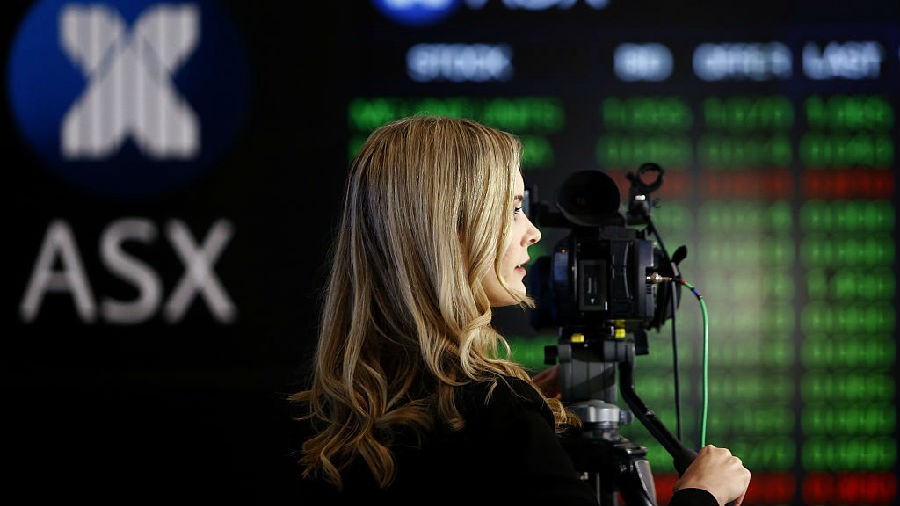(单词翻译:单击)
When Chinese stocks won admission to MSCI’s indices last week, Australia was not the first market many people looked to — but it is arguably one of the most affected. That is because in the broader Asia-Pacific region, where investors typically put Tokyo in a category all of its own, wins for Shanghai and Shenzhen will come at the expense of Sydney — already the region’s worst performer this year.
当MSCI上周决定把中国A股纳入其指数时,澳大利亚并非许多人最先关注的市场——但可以说它是受影响最大的市场之一。这是因为,在投资者通常将东京作为一个单独类别的广大亚太地区,上海和深圳之所得,将是悉尼之所失——后者已是今年该地区表现最差的市场。
The geographic centre of Asian market capitalisation, excluding Japan, has been shifting northward for decades. From a point just east of Darwin in 1975, as calculated by Credit Suisse, the midpoint is currently over the South China Sea and should reach Hong Kong by 2030 as mainland markets increase their share of regional benchmarks. By that point, Australia’s weighting in those same indices will have halved to 6 per cent, reckon the bank’s analysts.
亚洲市场(除日本外)市值的地理中心几十年来一直在向北移动。根据瑞信(Credit Suisse)的计算,1975年中心点位于达尔文市(Darwin)以东一点点,如今位于南中国海,而且随着中国内地股市在地区基准中权重的增加,到2030年中心点应会移至香港。瑞信的分析师估计,届时,澳大利亚在这些指数中的权重将减半至6%。

That long-term gloom is not the reason for this year’s underperformance. The ASX 200 has added just 1 per cent compared with gains of 17 per cent or more for Hong Kong, Seoul and Mumbai. Aussie business optimism is strong but consumer activity is not. Growth of 1.7 per cent is the country’s slowest since the aftermath of the global financial crisis, and earnings downgrades have begun once more to outnumber upwards revisions just as profits elsewhere in the region are picking up noticeably. Earnings are forecast to rise about 11 per cent in Australia this year — but 19 per cent in the region as a whole.
这种长期的低迷并非澳大利亚股市今年表现欠佳的原因。澳大利亚的ASX 200指数仅上涨1%,而香港、首尔、孟买股市的涨幅都达到了17%或更高。澳大利亚企业的乐观情绪很强,但消费者活动并非如此。1.7%的增速是澳大利亚自全球金融危机爆发以来的最慢增长,且盈利能力下滑幅度再次开始超过上修幅度,而此时正值该地区其他国家的盈利能力显著回升。预计澳大利亚企业今年的盈利将增长约11%,而整个亚太地区为19%。
For the past decade, Australia’s consecutive booms in mining, housing and, most recently, infrastructure spending have helped Sydney-listed stocks keep up with their faster-growing emerging market rivals. Now it needs another catalyst — and it is struggling. The Australian dollar, whose weakness flattered international returns for the past few years, appears to have found a bottom. Soft commodity prices and a heavy new bank levy are hurting the heavily-weighted resources and financial sectors.
过去10年,澳大利亚在矿业、住房以及最近的基础设施支出领域接连的繁荣,帮助悉尼上市的股票与增长较快的新兴市场竞争对手齐头并进。如今,澳大利亚需要新的动力——而它正在挣扎。虽然过去几年澳元走软美化了国际回报,但澳元似乎已经触底。疲软的大宗商品价格和沉重的新银行税正在危及权重较大的资源和金融部门。
In spite of their doldrums, Australian stocks are still trading on 15 times expected earnings, versus 13 times for the region. Downsizing Australia’s regional weighting will be slow and gradual, but it is yet another reason for international investors to think carefully about where they place their bets in Asia Pacific.
尽管处于低迷期,但澳大利亚股市的预期市盈率仍为15倍,而整个亚太地区为13倍。缩减澳大利亚在亚太地区的权重将是一个缓慢、渐进的过程,但这是国际投资者仔细考虑在亚太地区押注何处的又一个原因。


